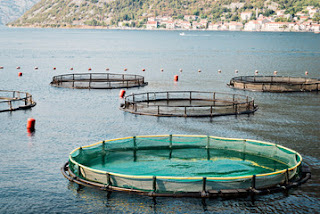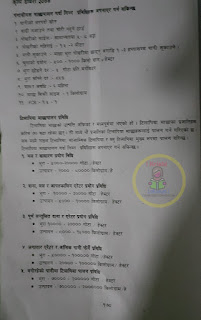Machha Palan
Fisheries, ponds, ponds, slums, cages and paddy fields can be followed by some management practices. The relevant technical information can be obtained from the District Agricultural Development Offices, Fisheries Development Centers, National Natural and Artificial Reservoir Fisheries Laboratory and Fisheries Development Directorate.From the research and study till date it has been reported that there are 3 species of fish in Nepal. Of the seven species of fish currently used by the farmers in the fishery, there are 1 Swadeshi and 2 Bidasi fish as follows:
- Swadeshi fishes: Rahu, Naini and Bhakur
- Bidaci carp varieties: Silver carp, grass carp and common carp
- Other Bidacean fishes: Puenteus, Tilapia, Pagasian and Renovrat.
- Beauty fish breeds no carp
- Swadeshi fishes: Rahu, Naini and Bhakur
- Bidaci carp varieties: Silver carp, grass carp and common carp
- Other Bidacean fishes: Puenteus, Tilapia, Pagasian and Renovrat.
- Beauty fish breeds no carp
Read Also:
Evolutionary fish species
- In warm weather it will grow faster in a short time.
- The disease may be less severe and less oxygen free.
- An abundant amount of females can give birth to the offspring and can be used for breeding as soon as they mature.
- Local people prefer.
- Living by eating natural and artificial foods produced in ponds.
Pangasius fisheries technique
Since Pangasius fish are grown in fresh water, swiftly swamped and weighed, this fish’s production is important. This breed has been practiced by a common breed of fish. Other species of pagansius fishes such as sutchi, river catifish and Bccourts catifish have also been reared.
Paginious fishery can be followed by the following techniques:
- A reliable source of water
- No place to flood and no steal
- Size of Pond: – Normally 2-3 pillows
- Depth of Lake: – 0.5-5 m
- Water Drying: – Dry the water for 3-5 weeks before leaving the fish in a brown pool
- Selected Use: – 2-3 kg / ha
- Brown drop rate: – 1 gallon per bergmeter
- Brown survival rate: 1%
- Compliance period: – 6 months
- Fish sale size: – 2 kg
- fcr: – 1.2-5
Tilapia fishing techniques
The tilapia fish originated in Africa and the Middle East. There are about 6 species of tilapia fish. Nine of them are reared for tilapia fish. Of these, the Nile tilapia, Mozambique tilapia and blue tilapia are mainly practiced. Tilapia fishing can be done by following techniques.
- Sewage and sedimentation method
- Brown – 2-3 grams / ha
- Production – 1 – 2 kg / ha
2. Dana stools and emergency aerator use method
- Brown – 3-4 hectares / ha
- Production – 3-5 kg / ha
3. Balanced grain and aerator use techniques
- Brown – 2-3 grams / ha
- Production – 3-5 kg / ha
4. Continuous aerator and aqueous water turning techniques
- Brown – 2-3 grams / ha
- Production – 2-3 kg / ha
5. Tilapia rearing techniques in running water
- Brown – 2-3 grams / ha
- Production – 3-5 kg / ha.
6. Feeding techniques for feeding cages
- Brown – 3 knots / cubic meter
Fisheries | Fish Cultivation * Production – 1-3 kg / cubic meter


